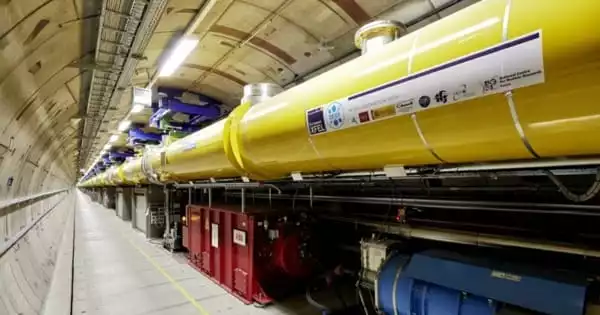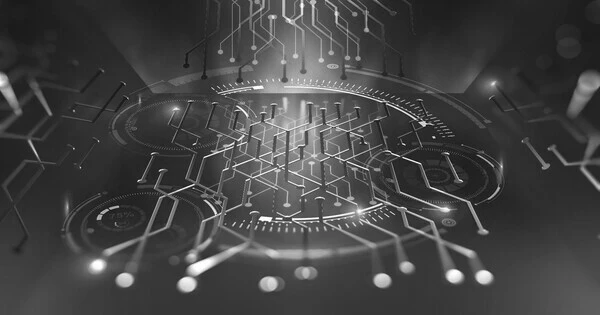Researchers employed liquid crystals to develop a flat magic window, which is a transparent device that emits a hidden image when illuminated. Any image can be created by the process of producing translucent liquid crystal magic windows. The procedure can also be used to make magical mirrors that reflect light rather than transmitting it in order to generate a picture. The technology is a modern take on a centuries-old light trick that originated in China and Japan thousands of years ago.
For the first time, researchers employed liquid crystals to create a flat magic window – a transparent device that generates a hidden image when illuminated. The technology puts a novel spin on a classic light trick.
Thousands of years ago, artists in China and Japan created bronze mirrors that looked like a conventional flat mirror while seeing one’s reflection but generated a different image when exposed to direct sunlight. It took until the early twentieth century for scientists to realize that these devices work because an image cast into the back of the mirror causes small surface variations that cause the image to form – and it has taken until now for engineers to apply the same principle to liquid crystals for high-tech displays.
“The magic window we built appears perfectly flat to the human eye but, in fact, has subtle fluctuations that produce an image in response to light,” said research team leader Felix Hufnagel of the University of Ottawa. “By designing the window to be relatively smooth, the image that is created can be seen over a large range of distances from the window.”
The magic window we built appears perfectly flat to the human eye but, in fact, has subtle fluctuations that produce an image in response to light. By designing the window to be relatively smooth, the image that is created can be seen over a large range of distances from the window.
Felix Hufnagel
Hufnagel and colleagues discuss their approach for making translucent liquid crystal magic windows that can produce any desired image in Optica. The procedure can also be used to make magic mirrors that reflect light instead of transmitting it to form a picture.
“Using liquid crystals to construct magic windows or mirrors could one day enable the creation of a reconfigurable version for making dynamic artistic magic windows or movies,” Hufnagel added. “Because of the capacity to achieve a lengthy depth of focus, the method could potentially be beneficial for 3D displays that provide stable 3D pictures even when seen from varying distances.”
Creating magic with liquid crystals
Although scientists have known for decades that ancient bronze magic mirrors generated images due to minor surface differences, it wasn’t until 2005 that Michael Berry, a mathematical physicist at the University of Bristol in the United Kingdom, discovered the mathematical basis for this effect. He eventually applied this knowledge to create a theoretical foundation for transparent magic windows as well as reflective magic mirrors. This work led Hufnagel and colleagues to develop a liquid crystal-based magic window.
Liquid crystals are materials that flow like liquids yet have molecules that can be arranged like solid crystals. The researchers employed a modified version of a well-known fabrication procedure to construct a specific liquid crystal pattern that permits a desired image to be created when lighted in their new study.

They employed a Pancharatnam-Berry Optical Element (PBOE), a liquid crystal device that works on a well-known principle known as the Pancharatnam-Berry phase. The researchers were able to adjust the characteristics of light as it traveled through the device on a pixel-by-pixel basis by changing the orientation of liquid crystal molecules in this device.
Stable images over multiple distances
“On a conceptual level, the theory developed by Berry was instrumental in determining how these liquid crystals must be oriented to create an image that is stable over a large distance,” said Hufnagel. “Our use of flat optical elements and a liquid crystal pattern with gentle variations prescribed by Berry’s Laplacian image theory allows the magic windows to appear normal, or flat, when one looks through them.”
The researchers utilized a camera to assess the light intensity patterns created by both devices after creating a magic mirror and window. When illuminated by a laser beam, both the mirror and the window created a visible image that remained stable regardless of the distance between the camera and the mirror or window. The researchers also demonstrated that the gadgets produced images when lighted with an LED light source, which would be more useful in real-world applications.
The researchers are now attempting to construct quantum magic plates using their production method. Two of these plates, for example, could generate entangled images that could be used to research novel quantum imaging procedures. They are also investigating the feasibility of making magic windows using methods other than liquid crystals. Using dielectric metasurfaces to create a magic window device, for example, could minimize its footprint while enhancing bandwidth.
















